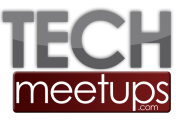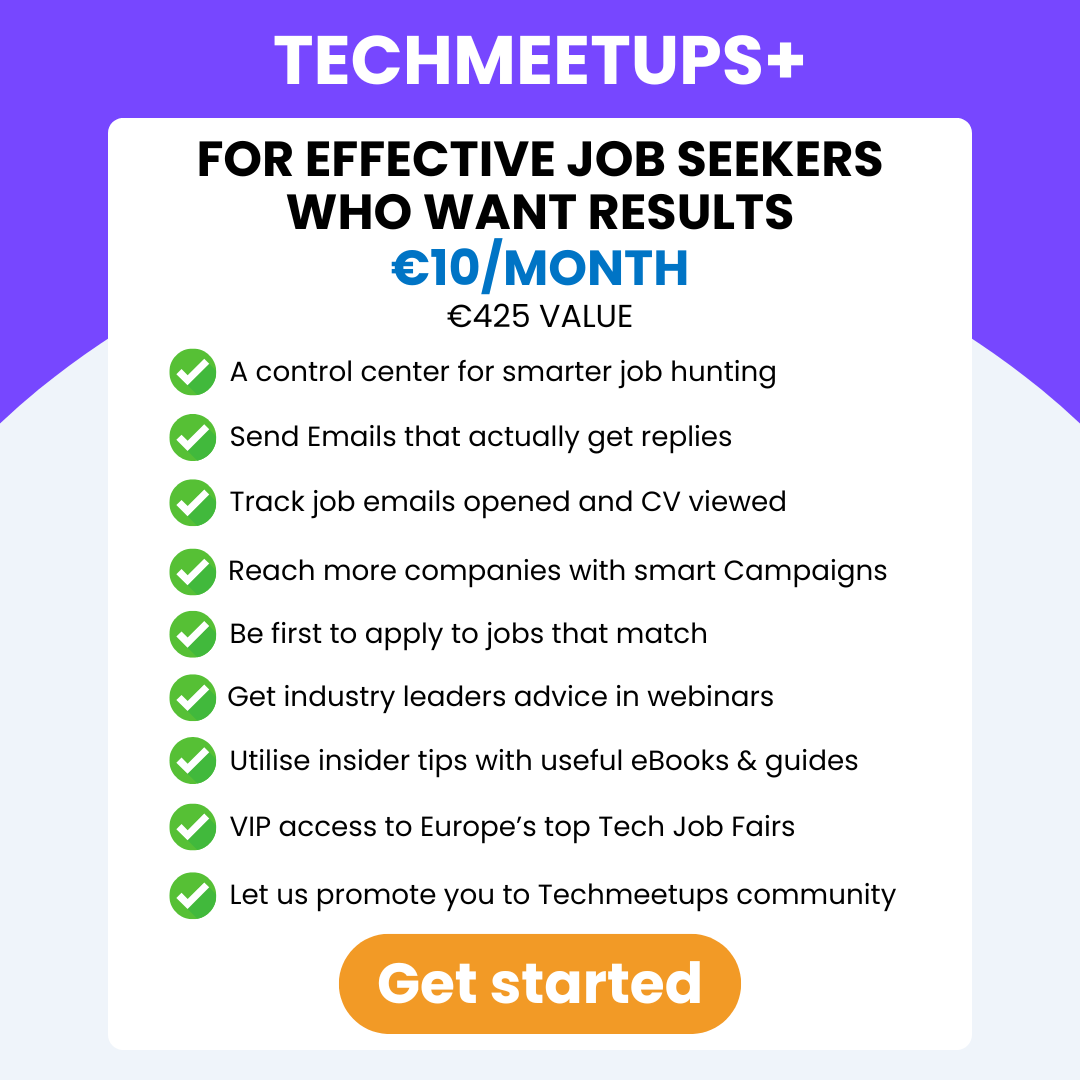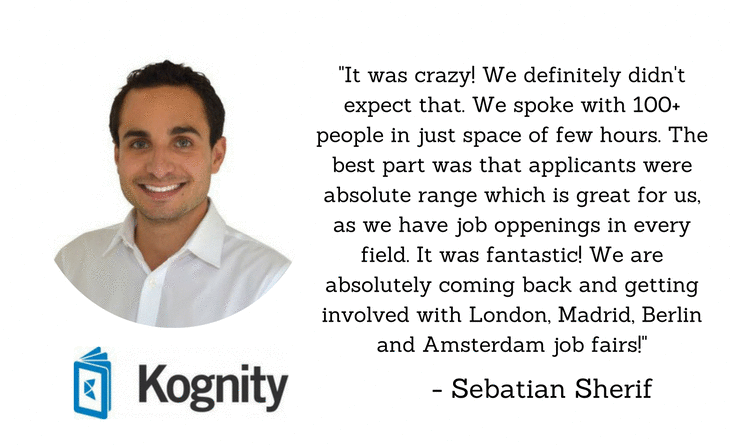In today’s competitive job market, understanding what attracts job seekers to certain roles and companies is crucial, not just to attract the best talents but to retain them. As workplace dynamics shift and the expectations of employees evolve, companies need to stay attuned to these changes to ensure they are seen as desirable places to work. The priorities and preferences of job seekers can greatly influence their job choices, making it essential for employers to understand and, where possible, align with these preferences to attract top candidates effectively.
Influence of company values on job seeker choices.

Job seekers evaluate potential employers based on a range of factors, from tangible benefits like salary and job security to intangibles such as company culture and growth opportunities. Some of the pivotal elements they consider include:
- Company Reputation: The standing of a company in its industry and its public image.
- Growth Opportunities: Prospects for personal and professional development within the company.
- Compensation and Benefits: Financial remuneration and company-provided benefits that improve quality of life.
- Work-Life Balance: The ability to balance professional responsibilities with personal life.
How job seekers gauge company reputation (e.g., reviews, awards).

When job seekers assess the reputation of potential employers, they typically look at various publicly available sources of information that reflect the company’s standing within the industry and with its employees. Here’s how they usually go about it:
Reviews from Current and Former Employees
- Employee Testimonials and Reviews: Platforms like Glassdoor, Indeed, and LinkedIn offer a plethora of employee reviews that provide insights into the working conditions, management styles, and company culture. Job seekers pay close attention to these reviews to get a sense of what current and former employees think about the company.
- Discussion Forums and Social Media: Beyond formal review sites, discussion forums like Reddit, and social media platforms provide a more informal backdrop where employees might share their experiences. These platforms can reveal unfiltered opinions about the company’s environment.
Industry Awards and Recognition
- Accolades: Awards presented by reputable industry bodies or trade associations can significantly bolster a company’s reputation. Job seekers often look up such awards to determine how a company is perceived within its own industry which can be indicative of innovation, stability, and respect in the market.
- Rankings and Lists: Many organizations and publications compile annual rankings and lists of the best places to work. Being featured in these lists can enhance a company’s prestige among job seekers.
Media Coverage
- Press Releases and News Articles: Positive news coverage can be a strong indicator of a company’s health and innovation. Job seekers might research news articles and press releases not only to check on any major developments, achievements, or community engagements but also to look for any controversies or issues.
Client and Customer Feedback
- Product and Service Reviews: The quality and reception of a company’s products or services directly reflect its operational success and market position. Interested candidates will often look at customer feedback, which can sometimes be found on the web or social media platforms, to assess the company’s market reputation.
Growth Opportunities

Role of Career Advancement Paths in Attracting Candidates
Career advancement opportunities often top the list of considerations for job seekers as they look for roles that promise upward mobility and growth. Companies that clearly articulate their career paths and internal promotion policies are more attractive because they show a commitment to employee development and long-term career success. This not only helps in attracting ambitious and forward-thinking candidates but also in retaining them, reducing turnover and fostering a motivated workforce.
The Significance of Professional Development and Continuous Learning
In today’s rapidly changing job market, continuous learning is essential. Companies that invest in the ongoing development of their staff through training programs and courses help create an innovative and adaptable workforce. This commitment not only enhances employee skills but also strengthens the company’s competitive edge and adaptability to market shifts.
Several top-tier companies are known for their robust emphasis on employee growth and development, setting industry standards for others.
- Google: Known for its innovative culture, Google offers employees various growth opportunities through its career development programs and robust training resources. It consistently appears on lists of the best places to work due to its efforts in employee development and various internal job markets to explore different roles within the company. https://www.google.com/about/careers/applications/
- Salesforce: Salesforce places a high premium on employee education, evident from its online learning platform, Trailhead, which is designed to help employees upskill themselves continuously. The company also promotes a culture of feedback and career coaching to ensure its staff can grow in their roles or pivot to others that suit their evolving career aspirations.
https://www.salesforce.com/ap/?ir=1 - Amazon: Internally known as a “Day 1” company to symbolize a start-up mentality, Amazon encourages employees to innovate and think big. Through its Leadership Principles, Amazon fosters an environment where all employees look to improve their departments and the company, thereby advancing their careers.
https://www.amazon.jobs/en/ - Deloitte: With its well-established Learning and Development programs, Deloitte provides both professional training and personal development resources, ensuring its employees are well-equipped to rise up the ranks within the company. deloitte.com
- Ernst & Young (EY): EY is another great example of a company committed to supporting its staff with customized learning tools and resources tailored to their specific role, sector, and competencies, facilitating both personal and career growth. ey.com
Compensation and Benefits

Compensation remains a fundamental aspect of job satisfaction and a primary motivator in the decision-making process for job seekers. A competitive salary not only acknowledges the skills and experiences employees bring to the table but also reflects the employer’s recognition of their worth. Employers must stay informed about current industry standards and geographical salary benchmarks to offer packages that attract and retain the best talent. Periodic salary reviews and adjustments based on market trends and individual performance are equally vital to keep the compensation package attractive.
Types of Benefits Highly Valued by Job Seekers
Beyond the paycheck, benefits form a critical component of the compensation package and significantly influence employee satisfaction and loyalty. Some of the most valued traditional benefits include:
- Health Insurance: Comprehensive medical, dental, and vision plans are highly sought after by job seekers looking to safeguard their health without financial strain.
- Retirement Plans: Contributions to retirement savings plans such as 401(k) in the US, or pension schemes in other countries, especially those with employer matching schemes, are greatly valued as they provide financial security for the future.
- Paid Time Off: Paid leave, including vacation days, sick leave, and parental leave, is crucial for work-life balance and is a standard expectation among job applicants.
Non-Traditional Benefits That Attract Top Talent
The modern workforce, particularly millennials and Gen Z, often prioritize flexibility and work-life balance more than traditional incentives. Companies that adapt to these needs by offering non-traditional benefits are likely to stand out. Some examples include:
- Remote Work Options: The ability to work from home all or part of the time is a highly attractive perk that can broaden the talent pool by removing geographical barriers.
- Flexible Hours: Flexibility in scheduling, such as flextime and compressed workweeks, allows employees to work when they are most productive or when it best fits their personal schedule, increasing job satisfaction and efficiency.
- Wellness Programs: Initiatives like gym memberships, mental health days, and in-office wellness activities address the growing concern for physical and mental health.
- Continuous Learning and Development Opportunities: Providing resources for professional development through courses, workshops, or tuition reimbursement can be a significant draw for those who value personal and career growth.
- Unique Perks: Some companies offer creative benefits such as pet insurance, on-site childcare, or travel credits that can be uniquely appealing to certain demographics.
Job Role and Responsibilities

A clear and comprehensive job description is crucial as it serves as the foundation of a candidate’s understanding of the role they are considering. Job descriptions that detail the responsibilities, skills required, performance criteria, and growth opportunities help prevent misunderstandings and set clear expectations from the outset. When job seekers know exactly what is expected from them, they can better assess their fit for the role, which translates into higher job satisfaction and retention rates when expectations are matched by reality.
How Job Roles Aligned with Personal Skills and Interests Attract Candidates
Job roles that resonate with a candidate’s personal skills and interests not only attract them but significantly contribute to their job satisfaction and productivity. When a job leverages a person’s strengths and areas of interest, it can lead to greater engagement and a profound sense of fulfillment. Employers that tailor job roles around the strengths of their employees often see improved innovation and efficiency, as motivated employees are more likely to take initiative and contribute creatively to projects.
The Appeal of Innovative and Challenging Projects
Offering innovative and challenging projects can greatly enhance employee engagement and retention. Such projects encourage personal and professional growth by pushing employees to expand their skills. This dynamic work environment keeps daily tasks engaging and reduces turnover, as employees value the recognition and satisfaction derived from overcoming challenges. Companies leading in innovation attract top talent motivated by impactful work and the opportunity to contribute to meaningful societal changes.
Work-Life Balance

Increasing Demand for Work-Life Balance Among Job Seekers
In recent years, the concept of work-life balance has shifted from a luxury to a necessity for many employees across various industries. Modern job seekers, especially among the younger generations, prioritize work-life balance highly when considering employment opportunities. The emphasis on mental health, family time, and personal well-being has driven this change, prompting companies to rethink their work policies if they wish to attract and retain talent. Employees are increasingly seeking jobs that offer flexibility and a culture that actively supports a balance between their professional responsibilities and personal life.
Examples of Practices and Policies That Support Work-Life Balance
Companies that successfully meet the growing demand for work-life balance often adopt a variety of progressive practices and policies that resonate with job seekers:
- Flexible Working Hours: Allowing employees to choose their work hours or adjust their schedules to accommodate personal commitments can significantly alleviate stress and improve job satisfaction. This flexibility enables employees to manage family needs, personal health, and even education without compromising their work quality.
- Remote Work Options: The ability to work from home or from remote locations is a policy that has gained immense popularity. This flexibility not only saves commute time but also allows employees to create a work environment that suits their personal preferences and life circumstances.
- Unlimited Paid Time Off (PTO) Policies: Some companies have started offering unlimited PTO to give employees the freedom to take time off as needed, trusting them to manage their own time in a way that doesn’t disrupt business operations. This can improve job satisfaction and employee retention by reducing burnout.
- Parental Leave: Expanding parental leave options beyond the legal requirements provides tremendous support for new parents, acknowledging the importance of their roles outside of professional spheres. This policy supports not just mothers but increasingly fathers as well, promoting equality and inclusion.
- Wellness Programs: Comprehensive wellness programs that support physical and mental health, such as gym memberships, wellness app subscriptions, on-site wellness activities, or mental health day-offs, can contribute significantly to maintaining a healthy work-life balance.
- Employee Assistance Programs (EAP): Offering EAPs that provide counseling and support services helps employees deal with personal or work-related issues, which might otherwise affect their performance and well-being.
- No-Email Policy Outside of Working Hours: Some companies adopt policies that discourage or restrict sending work-related emails outside of normal working hours. This practice can help define clear boundaries between work and personal time.
Technology and Innovation

Attraction of Leading Tech Companies
Companies at the forefront of technology attract job seekers eager to engage in groundbreaking projects that push industrial or societal boundaries. Working for these organizations not only boosts a professional’s credentials due to their association with innovation but also offers exciting opportunities for personal and professional growth.
Influence of Innovation on Job Choice
Innovative companies draw talent through several key incentives:
- Professional Growth: These companies provide environments that advocate for creativity and continuous learning, enhancing personal skill sets.
- Job Satisfaction: Employees typically feel more engaged and valued as they contribute to significant, evolving projects.
- Stable Future Prospects: Organizations committed to innovation are perceived as adaptable, promising long-term stability and career longevity.
- Cultural and Impactful Work: Such companies often foster a dynamic workplace culture and give employees a sense of purpose by aligning their tasks with larger societal impacts.
Examples like Tesla (https://www.tesla.com/careers) and SpaceX (https://www.spacex.com/careers/index.html) exemplify how radical innovation acts as a magnet for ambitious talent looking to influence future trends. These companies are not just workplaces; they are launchpads for professionals aiming to make a difference through technology.
Company Stability and Security

Job security is a fundamental concern for job seekers when selecting an employer. In an uncertain economic climate, candidates look for organizations that offer stability and security, assuring them of a reliable income and career longevity. Job security not only provides peace of mind but also fosters loyalty and productivity, as employees feel more secure to focus on their work without the constant stress of job loss.
Factors that Contribute to Perceived Company Stability
Several key factors influence perceptions of a company’s stability and security:
- Financial Health: A company’s financial status, revealed through profitability, revenue trends, and market share, is a primary indicator of stability. Financial transparency can boost confidence among potential and current employees.
- Longevity and Market Position: Organizations with a long-standing presence in the industry and a solid market position are often seen as more stable. This history and depth of experience suggest they have weathered various economic cycles.
- Growth Prospects: Companies that are growing, whether by expanding into new markets or launching new products, suggest forward momentum and durability in the marketplace.
- Industry Reputation: A strong brand reputation and industry recognition, such as awards or leadership in market innovation, enhance a company’s image as a stable employer.
- Leadership Quality: Effective and experienced leadership is crucial for company stability. Leadership that demonstrates clear vision and strategic decision-making ability can instill confidence in the company’s direction and security.
- Employee Retention Rates: High retention rates can be a testament to job satisfaction and organizational health, which indirectly points to stability.
- Adaptability to Change: Companies that show adaptability by evolving with market and technology trends are more likely to endure long-term challenges, making them appealing to job seekers who prioritize security.
Feedback and Employee Voice

Creating a workplace culture that values feedback is essential for continuous improvement and employee satisfaction. When companies encourage and act upon feedback, it demonstrates to employees that their opinions are valued and that they are active participants in shaping the workplace environment. This can lead to increased engagement, higher motivation, and a greater sense of ownership among staff. Moreover, leveraging diverse employee insights can lead to more innovative solutions and better decision-making, as the company gains a wider perspective on challenges and opportunities.
Platforms and Methods Companies Use to Ensure Employees Feel Heard

Companies employ various strategies and tools to ensure employees feel heard, ranging from traditional approaches to innovative tech-driven solutions:
- Regular Surveys: Many companies conduct annual, biannual, or even quarterly surveys to gauge employee satisfaction and collect feedback on various aspects of the workplace.
- Suggestion Boxes: Both physical and digital suggestion boxes can be effective tools for gathering anonymous feedback, providing employees with a secure method to express concerns or ideas.
- Town Hall Meetings: These meetings allow employees at all levels to voice opinions and ask questions directly to senior management, fostering transparency and open communication.
- One-on-One Meetings: Managers can use regular one-on-one meetings with team members to collect feedback and discuss career goals, challenges, and workplace improvements.
- Internal Communication Platforms: Tools like Slack, Microsoft Teams, or Workplace from Facebook facilitate open discussions and direct communication across different levels of the organization.
- Employee Resource Groups (ERGs): These groups provide a platform for employees from various backgrounds to share their experiences and perspectives, enriching the company’s understanding of diverse employee needs.
- Digital Feedback Tools: Innovative software solutions like Officevibe or TINYpulse offer real-time feedback capabilities, mood tracking, and customized surveys, helping managers keep a pulse on the team’s sentiment and needs.
For Job Seekers and Companies
Explore and Engage at TechMeetups Tech Job Fair!
If you are a job seeker, take this opportunity to connect directly with top employers from various industries. Discover companies that align with your career goals and personal values, and learn more about their culture and opportunities firsthand.
As a company, meet a diverse pool of talented candidates face-to-face. Share your unique corporate culture, discuss potential career paths within your organization, and find the perfect addition to your team.
Join us at TechMeetups Tech Job Fair and leverage the chance to forge meaningful connections that could define the future of your career or company. Register today and be part of this dynamic event where opportunities and potentials meet.
Don’t miss out on making valuable industry connections—attend the next TechMeetups Tech Job Fair. See you there!






